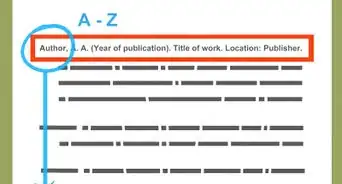This article was co-authored by wikiHow staff writer, Jennifer Mueller, JD. Jennifer Mueller is an in-house legal expert at wikiHow. Jennifer reviews, fact-checks, and evaluates wikiHow's legal content to ensure thoroughness and accuracy. She received her JD from Indiana University Maurer School of Law in 2006.
There are 7 references cited in this article, which can be found at the bottom of the page.
This article has been viewed 19,062 times.
Learn more...
When writing a research paper, article, or report discussing a legal issue, you may need to use statutes as references. The specific format of your citation will vary depending on the citation style you use. In legal writing, you would likely use the Bluebook citation system. This format is the basis for other citation formats, including the American Psychological Association (APA) and Chicago styles. If you're writing a paper using Modern Language Association (MLA) style, the elements you'll need to include in your citation are somewhat different.[1]
Steps
Sample Citations
Bluebook
-
1List the name of the statute first, if necessary. Include a statute's name if it is normally referred to that way, or if including the name would help your readers identify the statute you're citing. Follow the name with a comma.[2]
- Example: Family and Medical Leave Act of 1993,
-
2Provide the title number and code abbreviation. The United States Code is divided into 53 titles, each of which covers a broad subject area. If you're citing a US statute, the title number is listed first, followed by "U.S.C.," the abbreviation for the U.S. Code. For state laws, use the state code abbreviation listed in Table 1 of the Bluebook.[3]
- Federal example: Family and Medical Leave Act of 1993, 29 U.S.C.
- State example: Va. Code Ann.
Advertisement -
3Identify the sections or parts containing the statute. Use a section symbol (§) and a space, then type the section number where the statute appears. If it covers multiple sections, use 2 section symbols (§§) then provide the range of section numbers.[4]
- Federal example: Family and Medical Leave Act of 1993, 29. U.S.C. §§ 2601 – 2654
- State codes may have number formats that differ from the federal code format. For example, the section number format for the Virginia Code is x-x. For example: Va. Code Ann. § 20-13
-
4List the year of the code edition in parentheses. The last part of your citation is the year of the code edition. Use the year the volume of the code was published, not the year the specific law was enacted. This date is on the spine of the volume, if you're using a print version of the code. If you access the code online, it will be at the top of the page where the code edition is identified. Place a period after the closing parentheses.[5]
- Federal example: Family and Medical Leave Act of 1993, 29. U.S.C. §§ 2601 – 2654 (2012).
- State example: Va. Code Ann. § 20-13 (2012).
-
5Follow Chicago formatting for footnotes in-text. The Bluebook uses footnotes following the same guidelines as those found in the Chicago Manual of Style. For a statutory citation, the format of your footnote will look exactly the same as your bibliography entry.
APA
-
1Start with the common name of the statute. If the statute has a common name, make that the first part of the full citation in your reference list. Follow the name with a comma. Start your full citation with the title number or code abbreviation if the statute doesn't have a common name.[6]
- Example: Family and Medical Leave Act of 1993,
-
2Provide the title number and code abbreviation. For federal statutes, list the title number followed by "U.S.C." For state laws, use the correct abbreviation for that state's code as listed in Table 1 of the Bluebook. If you can't access the Bluebook, ask your instructor or supervisor how to cite a state law.[7]
- Federal example: Family and Medical Leave Act of 1993, 29 U.S.C.
- State example: Va. Code Ann.
-
3Include the section numbers where the statute can be found. Type a space after the code abbreviation, then use a section symbol (§) for a single section, or 2 section symbols (§§) for multiple sections. Type a space after the section symbol, then the number for the section or range of sections for the statute.[8]
- Federal example: Family and Medical Leave Act of 1993, 29 U.S.C. §§ 2601 – 2654
- State example: Va. Code Ann. § 20-13
-
4Close your citation with the year the code was published. Use the year that corresponds to the edition of the code you read – not the year the statute itself was enacted. You'll find the right year in the initial information about the code. On print volumes, it can also be found on the spine of the volume or on the title page.[9]
- Federal example: Family and Medical Leave Act of 1993, 29 U.S.C. §§ 2601 – 2654 (2012).
- State example: Va. Code Ann. § 20-13 (2012).
-
5Provide the common name of the statute and the year it was enacted in-text. If you can work the common name of the statute into the body of your writing, you don't need to include a parenthetical citation. Your readers will be able to find the citation in your reference list without any trouble.[10]
- Example: "The Family and Medical Leave Act of 1993 provided most employees with the right to unpaid leave without losing their jobs."
- If including the year in your text makes the writing clunky, include the year the statute was enacted after the common name of the statute. For example: "The Family and Medical Leave Act (1993) allows parents to take unpaid time off after the birth or adoption of a child."
- For statutes that don't have a common name, simply include the statutory citation in parentheses after the sentence in which you discuss it. For example: "The State of Virginia requires marriages to be licensed before they are recognized as legal (Va. Code Ann. § 20-13)."
-
6Refer to the Bluebook for other citation questions. The Publication Manual of the APA provides a basic citation format for federal statutes. For all other citation questions related to statutes and other legal documents, use the Bluebook style.[11]
- You can typically find a copy of the Bluebook at a public or university library. A research librarian also may be able to answer your citation questions. If you live near a law school, speak to one of the law librarians. They are specially trained in Bluebook citation format.
Chicago
-
1Cite statutes in footnotes, but not in your bibliography. [12]
- If you are using Chicago style and your instructor or supervisor wants you to include a listing for statutes in your bibliography as well, use the same format as you would for the footnote.
-
2Start with the commonly known name of the statute. You don't need to include the name of the statute if it's not ordinarily used or your readers wouldn't recognize it. However, if the statute has a commonly known name, make that the first part of your footnote. Place a comma after the title.[13]
- Example: Family and Medical Leave Act,
-
3Include the publication volume and publisher. For a federal statute, the title number is used for the publication volume, and "U.S.C." is used as the publisher. For state codes, simply use the abbreviation of the state code.[14]
- Federal example: Family and Medical Leave Act, 29 U.S.C.
- State example: Va. Code Ann.
-
4List the sections where the statute is codified. Type a space after the name of the code, then use either 1 or 2 section symbols (§ or §§). If the statute appears in only one section, type a space after the section symbol and provide that number. If the statute spans multiple sections, type 2 section symbols and then the first and last section of the range, separated by a dash.[15]
- Federal example: Family and Medical Leave Act, 29 U.S.C. §§ 2601 – 2654
- State example: Va. Code Ann. § 20-13
-
5Close with the year that statute was enacted. The year the statute was enacted is typically included in the full title of the statute. If not, you'll find it in the notes at the bottom of the statutory section itself. Type a space, then put the year of enactment in parentheses. Place a period after your closing parentheses.[16]
- Federal example: Family and Medical Leave Act, 29 U.S.C. §§ 2601 – 2654 (1993).
- State example: Va. Code Ann. § 20-13 (1919).
MLA
-
1Cite specific titles and section numbers in-text. Rather than having multiple statutory entries in your "Works Cited," MLA guidelines recommend creating a single "Works Cited" entry for the code as a whole. Essentially, you treat the code in its entirety as a book. Specific sections of the code are identified with in-text citations, just as you would list page numbers of a book.[17]
- Federal example: (29 U.S.C. § 2601).
- State example: (Va. Code Ann. § 20-13).
-
2Start your "Works Cited" entry with the author's name. All "Works Cited" entries begin with the name of the author. In the case of a statute, the author is the legislative body that enacts legislation. Separate elements with commas, then end this part of your citation with a period.[18]
- Federal example: United States, Congress, House.
- State example: Commonwealth of Virginia, Virginia General Assembly.
-
3Provide the title of the source. The name of the code where the statute can be found is the title. Spell out the name of the country or state in full. Use title-case, and place a period at the end of the full title of the code.[19]
- Federal example: United States, Congress, House. United States Code.
- State example: Commonwealth of Virginia, Virginia General Assembly. Code of Virginia.
-
4Include the name of the publisher and the date the code was last updated. Whether you access a statute online or in a print volume, it will list the name of the government office or organization that publishes the code. Place a comma after the name of the publisher, then provide the date the code was last updated in day-month-year format. Use standard 3-letter abbreviations for the name of the month. If you accessed the code online, place a comma after the date. Otherwise, use a period.[20]
- Federal example: United States, Congress, House. United States Code. Office of the Law Revision Counsel, 14 Jan. 2017,
- State example: Commonwealth of Virginia, Virginia General Assembly. Code of Virginia. Michie Company, 1 Jul. 2018,
-
5Identify the location of the code. If you accessed the code online, the last part of your "Works Cited" entry will be the URL of the code generally. Use the URL of the main page or front page for the code, and leave off the "http://" part of the URL. Place a period at the end to close out your citation.[21]
- Federal example: United States, Congress, House. United States Code. Office of the Law Revision Counsel, 14 Jan. 2017, uscode.house.gov.
- State example: Commonwealth of Virginia, Virginia General Assembly. Code of Virginia. Michie Company, 1 Jul. 2018, law.lis.virginia.gov/vacode.
Warnings
- This article covers basic citation methods for US statutes. If you're citing the statute of another country, check your style guide for the correct format. You may also be able to get this information from your instructor or supervisor, or from a research librarian.⧼thumbs_response⧽
References
- ↑ https://style.mla.org/documenting-legal-works/
- ↑ http://guides.ll.georgetown.edu/c.php?g=261289&p=2383798
- ↑ https://www.law.cornell.edu/citation/2-300
- ↑ https://www.law.cornell.edu/citation/2-300
- ↑ http://guides.ll.georgetown.edu/c.php?g=261289&p=2383798
- ↑ http://blog.apastyle.org/apastyle/2013/02/writing-references-for-federal-statutes.html
- ↑ http://blog.apastyle.org/apastyle/2013/02/writing-references-for-federal-statutes.html
- ↑ http://blog.apastyle.org/apastyle/2013/02/writing-references-for-federal-statutes.html
- ↑ http://blog.apastyle.org/apastyle/2013/02/writing-references-for-federal-statutes.html
- ↑ http://guides.library.cornell.edu/c.php?g=134360&p=881315
- ↑ http://blog.apastyle.org/apastyle/2013/02/writing-references-for-federal-statutes.html
- ↑ https://library.menloschool.org/chicago/legal
- ↑ https://library.menloschool.org/chicago/legal
- ↑ https://library.menloschool.org/chicago/legal
- ↑ https://library.menloschool.org/chicago/legal
- ↑ https://library.menloschool.org/chicago/legal
- ↑ https://style.mla.org/documenting-legal-works/#statutes
- ↑ https://style.mla.org/documenting-legal-works/#statutes
- ↑ https://style.mla.org/documenting-legal-works/#statutes
- ↑ https://style.mla.org/documenting-legal-works/#statutes
- ↑ https://style.mla.org/documenting-legal-works/#statutes



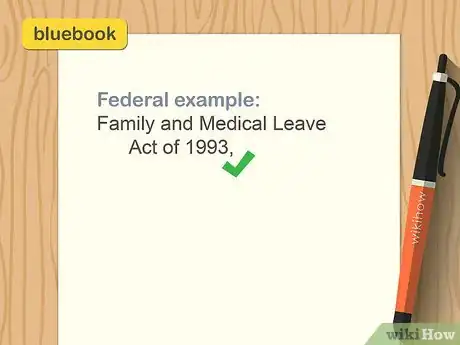






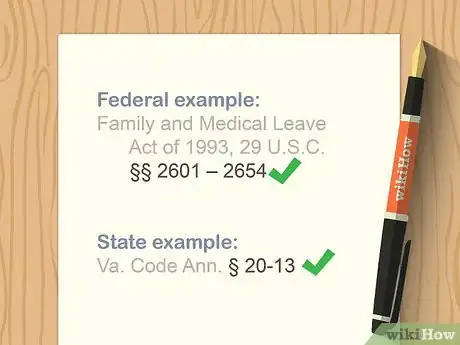
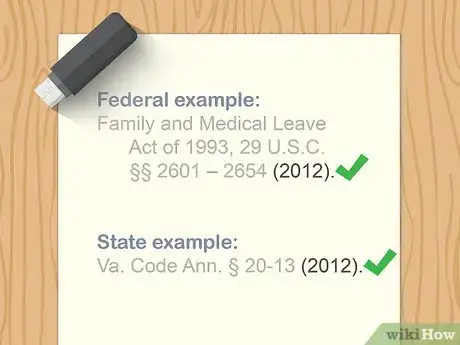



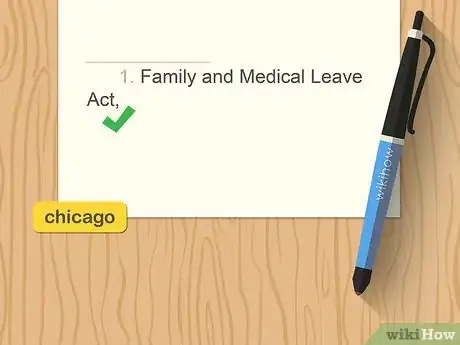

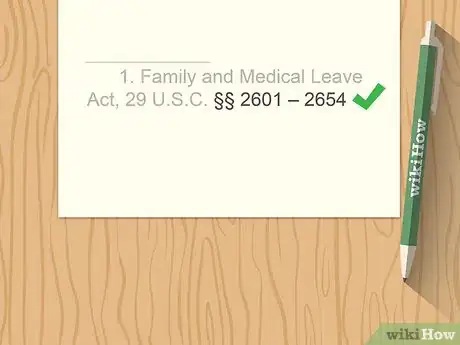
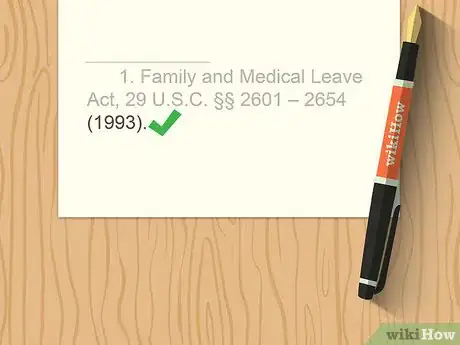


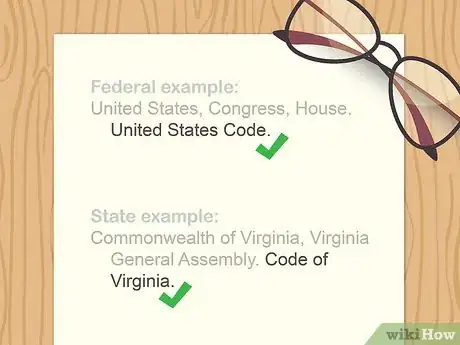











-Step-18.webp)

